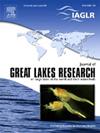Microplastics in freshwater copepods of Lake Baikal
IF 2.5
3区 环境科学与生态学
Q3 ENVIRONMENTAL SCIENCES
引用次数: 0
Abstract
Little is known about the ingestion or retention of microplastic particles (MPs) by freshwater copepods in nature or in the laboratory. Yet copepods dominate zooplankton biomass in large, oligotrophic lakes where they occupy a critical trophic position, shunting energy from the planktonic and microbial food webs to higher trophic levels. We collected pelagic copepods from Lake Baikal, Siberia where the concentration of MPs is high relative to other large lakes with no large, urbanized areas near its shores. We quantified microplastic (MP) ingestion incidence by the copepods and describe the shape, size, color, and polymer composition of ingested MPs. Incidence of MPs was more than 10X higher than that reported for copepods in British Columbia lakes and similar to that for copepods from oceanic sites recognized as hotspots of microplastic contamination. The high incidence value might be due to our detection of the smaller, more abundant MPs which have often gone undetected in other studies. All ingested MPs were either fibers or fragments; mean MP particle size was 65.2±41.9 µm; transparent MPs were most common; and ingested MPs composed of the high-density polymer polyethylene terephthalate (PET) were the most abundant. Our findings emphasize that calanoid copepods are a potential vector for moving MPs into the pelagic food webs of large, oligotrophic lakes and highlight the importance of investigating MP uptake, retention, and effects by freshwater copepods in nature and the laboratory.
贝加尔湖淡水桡足类动物的微塑料
淡水桡足动物在自然界或实验室中摄取或保留微塑料颗粒(MPs)的情况尚不清楚。然而,桡足类动物主导着大型低营养湖泊的浮游动物生物量,在那里它们占据着关键的营养地位,将浮游生物和微生物食物网的能量分流到更高营养水平。我们从西伯利亚的贝加尔湖收集了远洋桡足类动物,相对于其他大型湖泊,这里的MPs浓度很高,而在其海岸附近没有大型的城市化地区。我们量化了桡足类动物摄入微塑料的发生率,并描述了摄入的微塑料的形状、大小、颜色和聚合物组成。MPs的发病率比不列颠哥伦比亚省湖泊中桡足类的报道高出10倍以上,与被认为是微塑料污染热点的海洋地点的桡足类的发病率相似。高发生率值可能是由于我们检测到更小、更丰富的MPs,而这些MPs在其他研究中经常未被发现。所有摄入的MPs都是纤维或碎片;MP平均粒径为65.2±41.9µm;透明的MPs最为常见;由高密度聚合物聚对苯二甲酸乙二醇酯(PET)组成的MPs含量最多。我们的研究结果强调,鱿鱼类桡足类是将多聚乳酸转移到大型贫营养湖泊的远洋食物网的潜在载体,并强调了研究淡水桡足类在自然界和实验室中对多聚乳酸的吸收、保留和影响的重要性。
本文章由计算机程序翻译,如有差异,请以英文原文为准。
求助全文
约1分钟内获得全文
求助全文
来源期刊

Journal of Great Lakes Research
生物-海洋与淡水生物学
CiteScore
5.10
自引率
13.60%
发文量
178
审稿时长
6 months
期刊介绍:
Published six times per year, the Journal of Great Lakes Research is multidisciplinary in its coverage, publishing manuscripts on a wide range of theoretical and applied topics in the natural science fields of biology, chemistry, physics, geology, as well as social sciences of the large lakes of the world and their watersheds. Large lakes generally are considered as those lakes which have a mean surface area of >500 km2 (see Herdendorf, C.E. 1982. Large lakes of the world. J. Great Lakes Res. 8:379-412, for examples), although smaller lakes may be considered, especially if they are very deep. We also welcome contributions on saline lakes and research on estuarine waters where the results have application to large lakes.
 求助内容:
求助内容: 应助结果提醒方式:
应助结果提醒方式:


